What can different sectors learn from one another?
Knightsbridge Furniture is a UK based manufacturer of contract furniture that serves a number of sectors including; workplace, hospitality and healthcare. Due to the current COVID-19 crises the spotlight is firmly focused on the care sector (in the broadest sense) and is likely to be for some time so Knightsbridge gathered together a group of experts from a number of sectors to talk about different approaches to space, and whilst no-one was claiming to have the crystal ball the discussion that followed was insightful (if not always sticking to the intended question!)
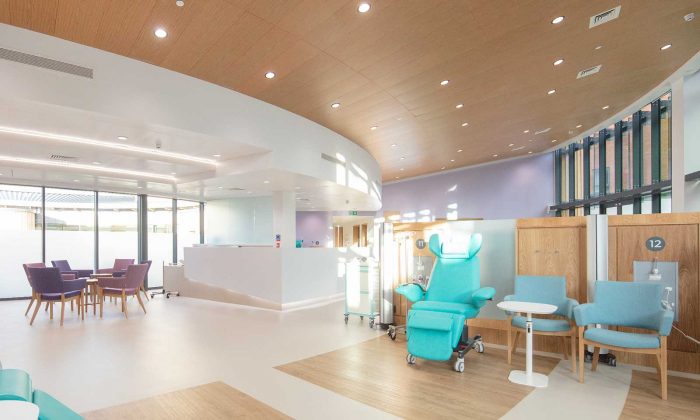
The panel
Jason Brown –Director of Design and Development, Knightsbridge Furniture
Jason is a highly experienced product designer within the contract sector, currently leading design and development at Knightsbridge Furniture, a British manufacturer with a rich history of crafting innovative and design led solutions for the in the healthcare, hospitality, care homes and workplace sectors. Their award winning designs are underpinned by a deep understanding of individual and sector needs.
As one of very few British contract furniture suppliers to focus on in-house design and development, and as an approved NHS furniture supplier, Knightsbridge Furniture is able to create unique products that offer functionality, style and comfort in equal measure.
Colin Macgadie – Chief Creative Office, BDG architecture + design
Colin is the Chief Creative Officer at BDG, responsible for creating world class environments for all its clients, regardless of size or sector. BDG works with major brands such as Lego, Nike and Sony, as well as working across WPP’s global property portfolio delivering in excess of 1000 sqm of space across Europe.
His firm belief that architecture is most successful when people feel a connection to the space is reflected in BDG’s studio culture and their evidence based design approach. Colin’s unique understanding of workplace dynamics, and the impact of the built environment on people and culture, delivers innovative solutions and cultural change. This results in the creation of workplaces that align with and support business strategy.
Mark Eltringham – Editor of Workplace Insight and IN magazine
Mark has worked in the office design and facilities management sector for 20 years as a marketing professional, consultant, editor and writer. At the start of 2013 he launched www.workplaceinsight.net, an online publication that explores the relationships between commercial interior design, workplace management, technology, human resources, the wider business world and society – it is now the most widely read online resource in this sector.
Simone Fenton-Jarvis – Workplace Consultancy Director, RICOH
Simone is Workplace Consultancy Director at Ricoh and has over 13 years’ experience in FM and Workplace. Simone believes an organisation needs to put people first, and it’s this belief that has driven her initiatives and work within the industry. Simone is an advocate for lifelong learning, she has completed an MBA in FM, is a keen reader and regular attendee at events. Simone is a fellow of IWFM and the vice-chair of the Workspace Special Interest Group and hopes to drive an industry where FM and Workplace is truly recognised as being key for all businesses.
Yorgo Lykouira – Founder & Creative Director, Rainlight
Yorgo Lykouria is an award winning architect, product designer, writer, and film maker based in London with more than twenty years’ experience. As the Founder and creative Director of Rainlight, he continues to establish a design culture that creates resonant and visionary work.
His broad spectrum of work includes automotive interiors for Ferrari, furniture for Vitra, Moroso, and Akaba, bathroom systems for Alape and Dornbracht, and partition systems for Lindner and Clestra. He has a masters degree in architecture and became the youngest design leader at Helmut Jahn’s architecture studio in Chicago, where he worked for 8 years on large scale international projects including the acclaimed Sony Centre in Berlin, the Post Tower in Bonn, the Cologne/Bonn Airport and the Bayer HQ building in Leverkusen.
Matthew Voaden – Divisional Director, HDR|Hurley Palmer Flatt
Matthew Voaden, Divisional Director of MEP has over 17 year’s experience in the building services industry across the UK, gaining extensive technical knowledge of Mechanical and Public Health Building Services, Sustainability and Electrical Building Services.
Matthew is focused on developing the hospitality sector for HDR|Hurley Palmer Flatt, having worked on some of the most high profile and complex buildings in this are such as The Ned in London.
The Conversation
In the last few months we have all become accustomed to new phrases and acronyms, #WFH and ‘Pivot’ are two regular phrases, and the latest to enter the lexicon is RTW: Return to Work (of Royal Tonbridge Wells if you are from Kent). The uncertainty ahead has led to a huge amount of discussion and speculation regarding our places of work. From the more philosophical question of why we need an office in the first place to what purpose does it serve? To more practical questions around the nitty gritty of how we are going to manage social distancing between workers and deep cleans on a regular basis.
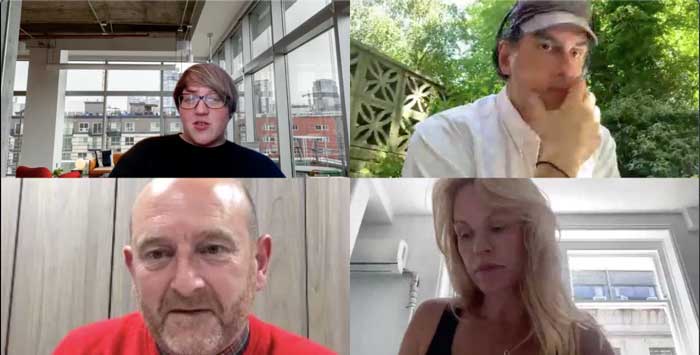
And of course, the ability to work from home largely depends on what you do, Jason Brown can only do his job from the factory just as a health worker (nurses, doctors and care workers) need to be where the patients are, and a waiter can only provide a top quality service with their customers in a bar or restaurant.
Back to the office, there is no doubt that COVID-19 is forcing all businesses that may have been thinking agile working solutions to embrace them more fully. The need for human contact is a regular theme, whilst Zoom and Team have been doing a fine job keeping us all ticking, they aren’t a long-term substitute for ‘face to face’ contact.
The issue of wellbeing has never been higher on the corporate agenda, whilst the ‘freedom to choose’ can be a positive for many, others find endless shapeless days, disorientating.
The issue of ‘trust’ is also featuring heavily in the debate, Colin Macgadie highlighted that perhaps those businesses that hadn’t accommodated a remote working style didn’t trust employees in the first place.
Simone Fenton-Jarvis, also illustrated the need to measure output rather than presenteeism, it is still an issue even after years of tech that can enable a “work from anywhere culture’ that management and board directors want people in offices.
Yet, the ‘command and control’ element is still very much part of the remote working discussion, possibly even more so. Logging on and logging off is akin to clocking in and out of factory – potentially a company could measure the stroke of a keyboard. If we aren’t careful this could be an incredibly damaging retrograde step, measuring performance by process and hours rather than quality of output – a quantified workplace, the exact opposite of the utopian scenario of freedom.
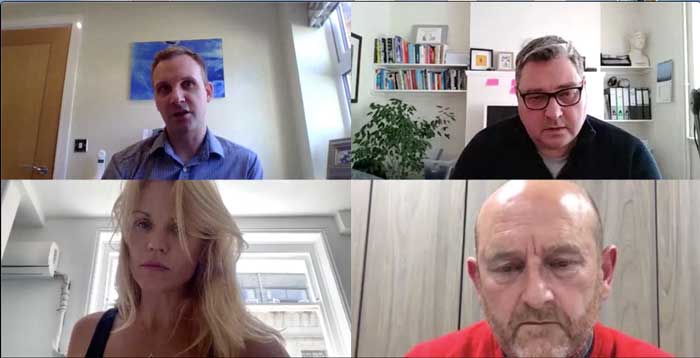
Another key theme from this discussion, was the way the ‘home versus the office’ debate is so frequently framed as a binary choice. Often the things that employees dislike about the office are easily solvable – like the commute for example. The purpose of the office and its function in bringing people together is not in doubt but it doesn’t have to be at 9am every morning, staggering arrivals and departures is straight forward.
Are we finally breaking free of the Industrial Revolution? Yorgo Lykouria pointed out that it was only in recent years that an architect was able to work from home, prior to online drawing packages, activity centred around the large drawing desks, often working through the night in offices on deadlines, as there was no way you could take it home. But there has to be other typologies in place beyond the office and the home, we must accept that some people simply can’t work from home for many reasons.
The current surge in remote working is often tagged in the media as a ‘great unplanned working for home experiment’ but just as we don’t know what the ‘new normal’ will be, it is also important to point out that this isn’t ‘normal’ remote working. It is enforced and home bound – we currently don’t have the option to take a break in the gym or a local café, these activities punctuate our days and add much needed variety and moments for inspiration.
Next to the topic of trust is often cost; the debate of lowering real estate cost by utilising people homes instead? Is this actually a case of employers outsourcing their costs to employees, and if so will this result in a backlash?
Back to Basics
As business do start to journey back to their offices under new rules and regulations of social distancing and hygiene are we making too big a deal of it?
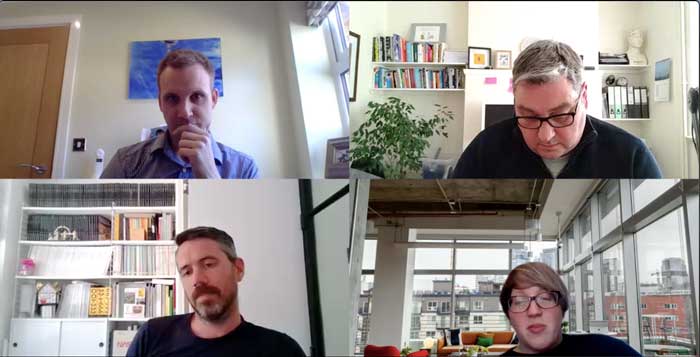
We can look to construction sites to see how to enforce new health & safety regulations, and of course to hospitals to see that it is perfectly possible to keep people sanitised, as long as we all follow the rules.
Communication plays a key part with the emphasis being on protecting the employee and not controlling them, therefore the right choice should be obvious.
There are also the elements of the building that are less visible that have a role to play; the M&E provisions may need to include UVC lighting in HVAC systems to sanitise air, removing door handles, upgrading filters to name a few issues. Vertical transportation is a huge issue for many organisations – how do you keep to 2 metre distancing in a lift?
The move back to the office for the next six months at least is also temporary, this is a marathon not a sprint and really we are still dealing with the here and now. A large part of which, is working out what is safe and what will stand us in good stead for the long term, perceptions are shifting all the time.
Whilst we may be able to create an oasis of sanitised space, people still have to get there, travelling on public transport where there is far less hygiene control.
It is important that the sense of place we get from the office does not become permanently fragmented. Not just the structured part of our day but the important serendipitous moments whilst making morning coffee and having a conversation with a colleague – this is about being human.
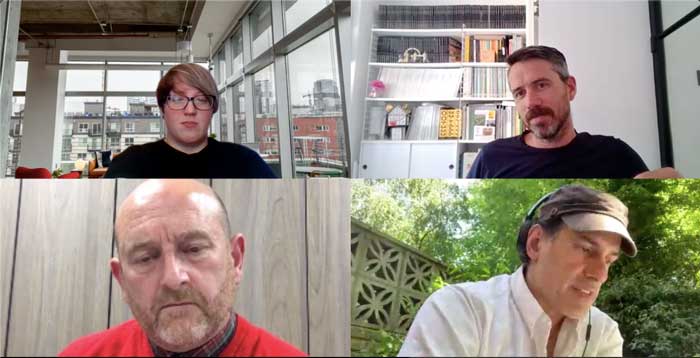
The sensible method back to the office seems to be a phased one. Starting with essential workers and progressing from there, there will never be a solution that suits everyone because every organisations is different and unique.
Returning to the original question for this round table which was about what can we learn from healthcare, the consensus was that we should be designing healthy spaces for people anyway but like all complex problems the devil is in the detail.
Bringing large number of people together will inevitably bring germs, so a revision of fixtures, fittings, materials and building systems is imperative.
Architects and designers work with antimicrobial surfaces all the time, for example a powder coating has inherent antimicrobial properties. It is likely that clients across all sectors will start to ask more questions about this, including the way upholstery is stitched for ease of sanitisation and deep cleaning purposes.
Long term, we could witness a demand for more standard controls around specific products, as well as the need to create new materials, to sit alongside our new ‘social unacceptability’s’.
Now wash your hands!





Comments